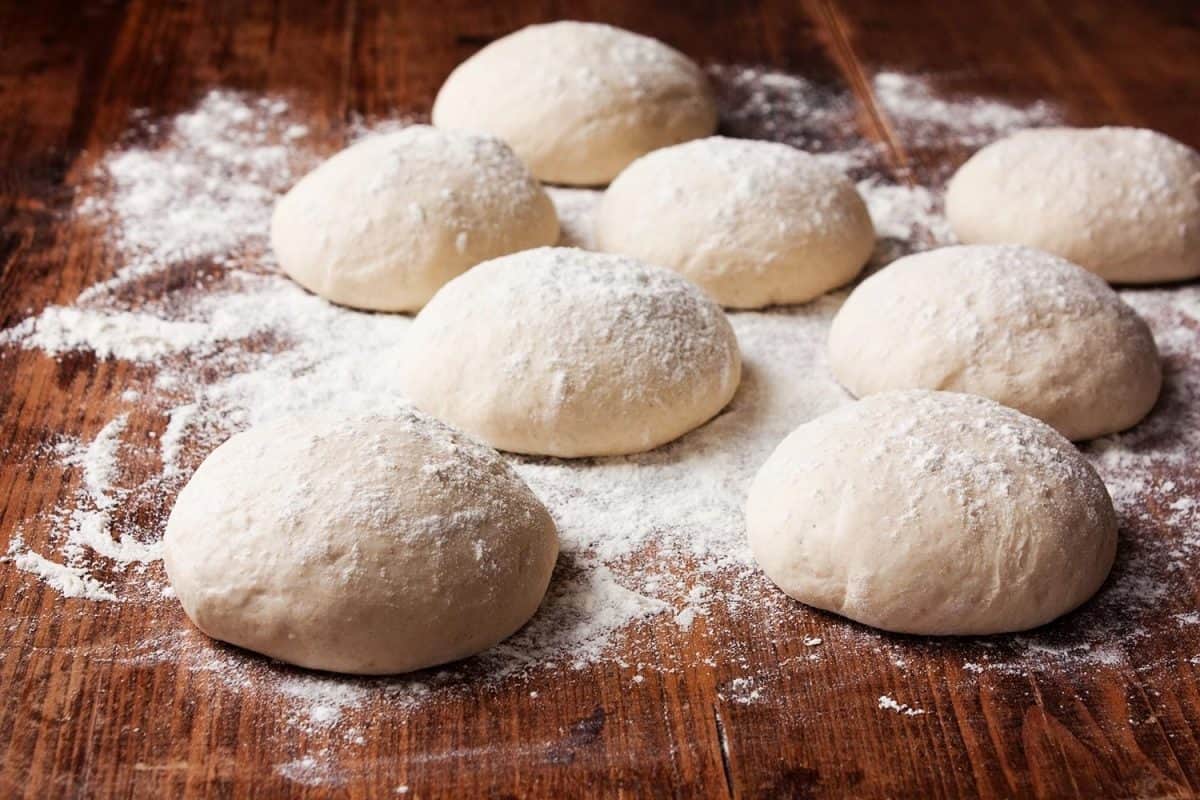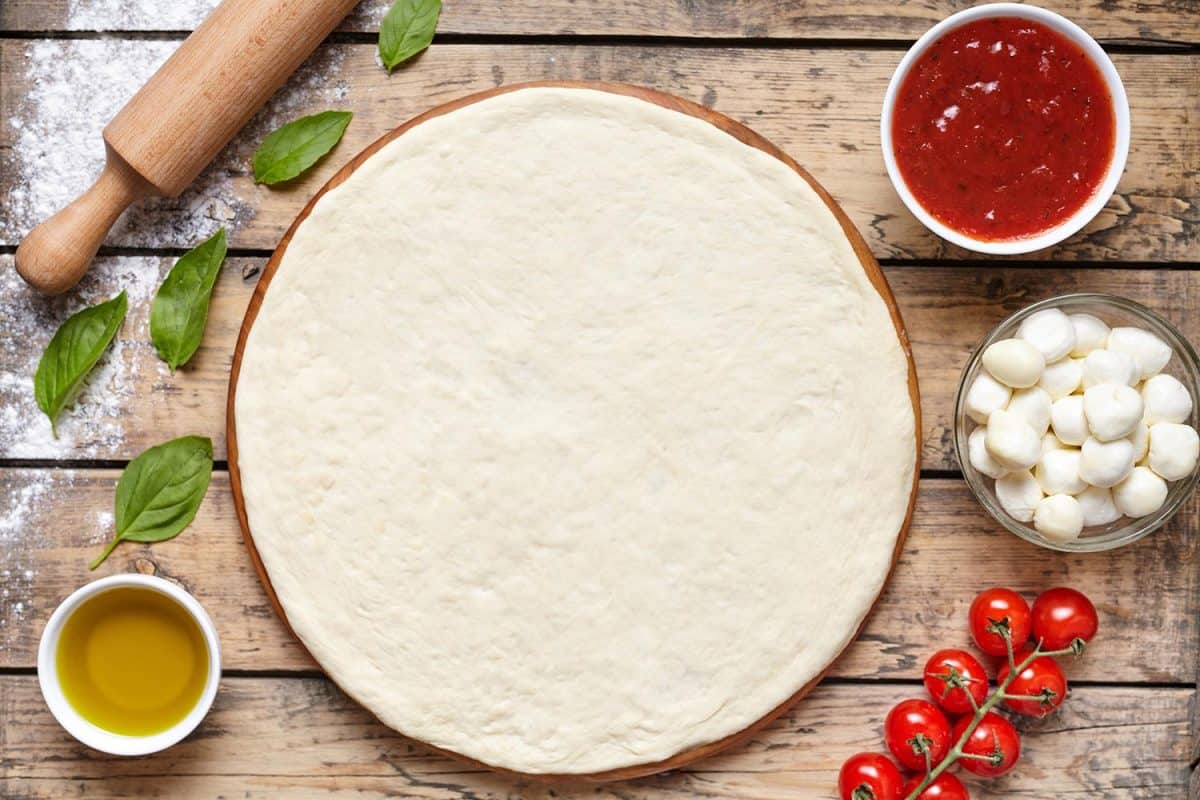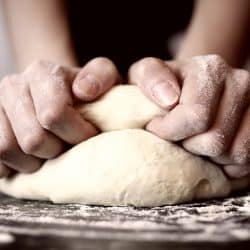It's pizza time! You have the ingredients ready to prepare a dish everyone loves. But, there's one small detail missing. How long should the pizza dough rise? If that's what you're wondering, we have done the research to provide you with an answer!
How long a pizza dough should rise depends on several factors, namely the desired thickness and texture. For a thin-crusted pizza, skip the rise and prepare it immediately. If you want a thicker crust, let the dough rise for 12 to 24 hours to help it develop air pockets and flavor.
As you can see, the amount of time you wait will impact the texture of the pizza. Shorter wait times will give you thin-crusted pizza. On the other hand, long wait times give you airy slices with a crust that holds more flavor. If you're curious to know why this happens, we'll cover more on the topic further ahead.

Before You Start
Like most dishes, the correct way to prepare pizza is all subjective. Waiting different times will give you varying results. So, there's no definitive answer to how long you should wait.
It will mostly depend on what you're planning to do. Think of the best pizza you've had in the past. How was the crust? Did it have a thin crust with a cracker-like flavor?
Or was your experience different than that? More specifically, was the pizza airy with a flavorful dough? These are questions you'd need to ask yourself to determine your goal.
With these details in mind, let's go over the results you'd see depending on how long you let the pizza dough rise.

Pizza Dough Wait Times
We'll start with the shortest wait time. More specifically, no waiting at all. If you don't care about the flavor of the crust itself, you can use it straight away. However, the dough will most likely be hard to work with.
The crust will be flat, tough, and dense. Some would compare the flavor to Chef Boyardee's pizza kit. It isn't the best restaurant-style pizza. But, if you're caving in to your cravings, it might be worth a shot.
Rise for 2 Hours
Giving the dough even a few hours to rise will make a better product than not waiting at all. So, if you give it about 2 hours to rise, here's what will happen:
- The dough will be slightly easier to handle.
- Large air bubbles will be present on the inside of the crust.
- In terms of texture, it will be soft and pillowy.
- It won't be crispy, just a bit chewy.
- The flavor will fall more on the bland side.
Rise for 24 hours
When you're trying to go for restaurant-style pizza, the standard time to wait is 24 hours. This period will enhance the taste of the crust and the interior structure. Depending on the type of yeast you use, the flavor might be similar to sourdough.
Allowing it to rise for 24 hours overnight in a fridge will give you these results:
- Handling the dough will be easier.
- The bubble structure is finer and spread out.
- The flavor still falls on the flat side.
- In terms of texture, it's less pillowy with slightly more crunch and chewiness.
Keep in mind that flavor is subjective. If you want to know what works best, you'd have to commit to trying out these different ways yourself. This way, you'll find out which one suits your tastes the best!
In general, letting the dough rise for a 24-hour period produces the pizza that most people love.
Longer than 24 Hours
If you're feeling adventurous, it is possible to let the dough rise for a longer period. However, it might take a few tries to get the conditions just right. Once you manage to do it, the results could be satisfactory.
According to one person's experience, a 2-3 day wait period is the best option regarding flavor and texture.
When you want to produce a crunchy pizza, letting the dough rise for 48 hours in the fridge is the way to go. With this timeframe, the dough will tend to be stickier. In addition, it will have a beer-like smell.
In terms of flavor, it gets stronger. Some would describe it as a yeasty-fermented flavor. Of course, you can wait even longer!
At 72 hours, the pizza dough will get stickier. So, it might be tougher to handle. The surface of the dough will be noticeably bubbly.
However, if you love crunchiness, letting the dough rise in the fridge for this long produces a crunchy crust.
Longer than 72 Hours
You'd be surprised to know that you can wait even longer than three days!
What about five days? The waiting does seem to have a limit. As you wait longer, the dough will become harder to handle. It will tend to get soft and stickier. Thus, it becomes a challenge to shape into a pizza.
And, if you do manage to shape it, it will be a wasted effort because it will lose its shape once you try to release it from the peel. However, the maximum amount of time you can wait seems to be five days.
At four days of rising, the dough will have a surprising change in odor. It might smell like a ripe banana. The same goes with a five-day rise. From here, it all goes downhill.
If you'd like to see the results in action, here's a YouTube video showcasing the doughs with different rising times:
The video mainly focuses on making pizza bread. But, you can also make a pizza with the dough. Of course, depending on the recipe you've followed, your results may vary.
Can Pizza Dough Rise Too Long?
As mentioned, there does seem to be a limit to how long you can let the dough rise. But, it will generally depend on the recipe you use. From the information above, we can see that waiting longer than three days can produce interesting results.
In some cases, it can give the dough a strong flavor. On the other hand, you might experience the opposite. The dough can triple in size to the point it spills over the container.
In terms of texture, it becomes too weak and sticky. If you perform the push-back test, your fingerprints will remain on the dough. Moreover, shaping the dough will no longer be possible.
As you stretch it, you'd find it impossible to make a disk without tearing the dough. It will even tear under its own weight when you pick it up.
In terms of flavor, you won't get the sourdough flavor. It will closely resemble the taste of sour milk. Again, it depends on the situation. More specifically, the amount of yeast you use can affect the outcome.
If you want to play it safe, let the dough slow-rise in the fridge for one to three days. Five days would be pushing it. However, it might work out for you.
What Temperature Should Pizza Dough Rise At?

The temperature has an impact on dough development. Though, the temperature your pizza dough should rise at depends on your goals. If you're trying to make a pizza within the day, letting the dough rise at 68 to 104 degrees Fahrenheit is your best option.
When you don't want to make it within the day, you put it in the fridge. This option is what many would call a slow rise. The reason is that lower temperatures slow down the yeast, increasing rise time.
The general rule would be to adjust as necessary. For faster rise times, let it rise at a higher temperature. To slow down the process, put it in the fridge.
Do You Cover Pizza Dough While It Rises?
You might also be wondering if pizza dough should be covered while rising. The consensus is that a cover is necessary for the process. This way, the dough doesn't dry out. Without one, the surface will dry out and limit the rise.
How Do You Tell if Dough Has Risen Enough?

The general rule is to check the size. If it has doubled in size, it should be ready to use. Though, you should pair this visual test with another one.
Another way you can check for readiness is through a poke test. When you poke the dough, two situations can occur. In the first, the dough will spring back immediately.
In this state, the dough is still not ready. Let it rise for a bit more time. Then, poke it again. What should happen now is the indentation will stay longer.
Though, it doesn't mean that the dough shouldn't spring back. It will, but at a slower rate. At this stage, the dough should be ready for use.
Here's a YouTube video demonstrating these tests:
Do You Knead Pizza Dough Before or After It Rises?

Kneading is necessary for the development of gluten in the dough. Accordingly, you'd only need to knead before letting it rise. It all depends on the recipe.
In some cases, kneading won't be necessary before or after. On the other hand, some will call for kneading before and after. However, kneading after it rises should be brief.
In Closing
As we've found out, letting the dough rise at different times can make a noticeable difference in the outcome. There's no wrong answer to the question. It all depends on your goals!
Before you go, here are some other articles you can check out:
How Hot Should A Pizza Oven Be?
Do You Need To Grease A Pizza Tray?



![Chef spreading tomato sauce in the pizza dough, How Much Pizza Dough Per Pizza? [By Pizza Size]](https://kitchenseer.com/wp-content/uploads/2022/02/Chef-spreading-tomato-sauce-in-the-pizza-dough-250x250.jpg)


![Baker making yeast for his bread mix, How Long Does Pizza Dough Last In The Fridge? [Homemade and Store Bought]](https://kitchenseer.com/wp-content/uploads/2022/02/Baker-making-yeast-for-his-bread-mix-250x250.jpg)